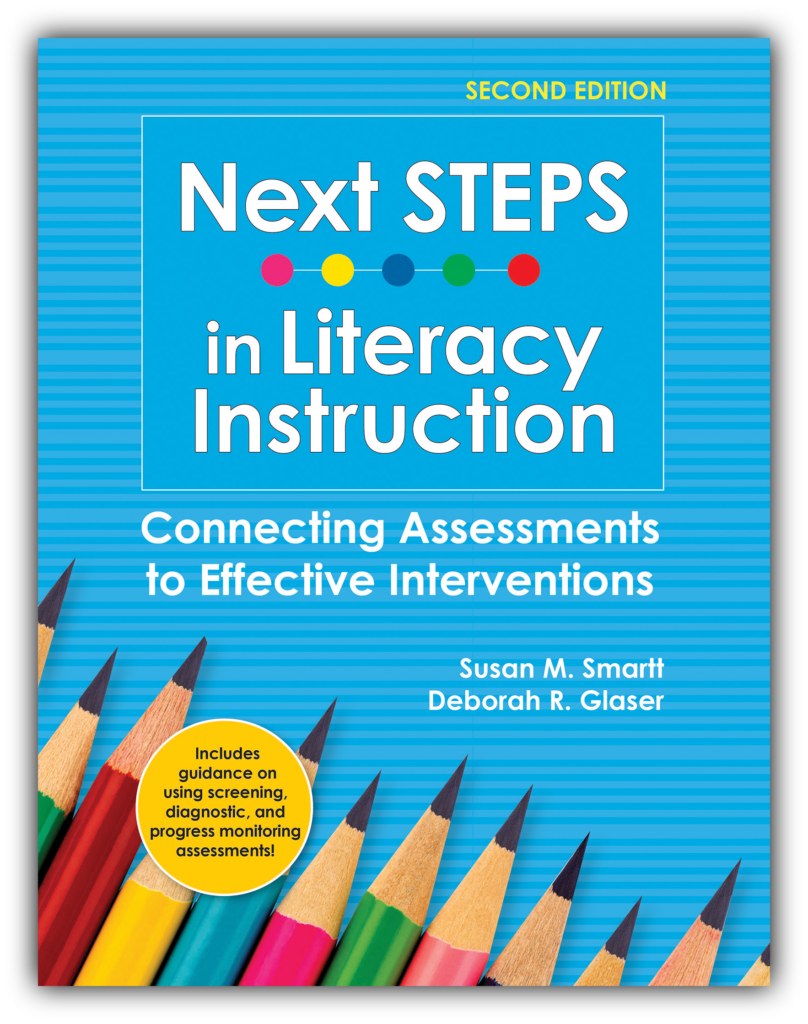5 Reading Activities to Improve Your Students’ Fluency
December 5, 2024
 Reading fluency is a vitally important element of reading success. As a teacher, you can help build students’ fluency with repeated reading activities—a great way for struggling readers to log the practice they need to strengthen their fluency. Excerpted and adapted from Smartt & Glaser’s Next STEPS in Literacy Instruction, Second Edition, today’s post gives you five ready-to-use repeated reading activities that will give your students’ fluency a boost.
Reading fluency is a vitally important element of reading success. As a teacher, you can help build students’ fluency with repeated reading activities—a great way for struggling readers to log the practice they need to strengthen their fluency. Excerpted and adapted from Smartt & Glaser’s Next STEPS in Literacy Instruction, Second Edition, today’s post gives you five ready-to-use repeated reading activities that will give your students’ fluency a boost.
Repeated Reading With Recorded Models
Struggling readers can improve fluency by listening to models. Studies have shown that students who use audiotaped recorded models for reading seem to have improved levels of prosody—that is, they read with better expression. Take care when setting up listening centers for improving fluency; often the tapes will be too fast and difficult for struggling readers to follow along. Several programs have been developed just for this purpose, including Read Naturally, Quick Reads, and Great Leaps. These programs provide several steps of listening and following along, followed by independent reading. The student finishes with a reading to the teacher for final approval.
“Take Turns” Oral Reading
You and the student can take turns reading part of a passage that is familiar. Reader 1 (whether that’s you, a peer, or another helper) is the stronger reader and should read first, while Reader 2 follows along by pointing to the text. Then they swap, with Reader 2 taking over where Reader 1 left off. Monitor the student’s reading for accuracy and a smooth, fluid pace. After the student has completed the passages, Reader 1 and Reader 2 go back and take turns asking questions (e.g., “Tell me what happened here”). Have the students keep a list of the books they read and give them points for being good listeners and following directions. Ask the readers to share with others what their stories were about.
Echo Reading
Read a brief section of material aloud (or have another strong reader do it). The other students follow along and then immediately reread the same material in an echo fashion. The material is parsed into a page, a paragraph, or even a sentence. Students should follow along using their fingers to point to the phrase or line of text to make sure they’re not just mimicking the leader. This method is especially helpful when the reading material is new to the reader and at a challenging level.
Paired Repeated Reading
Pair two readers, with one being stronger than the other. The first student reads a short passage three times out loud and gets feedback, and then they switch roles. To pair students for alternate reading, complete this exercise in private before this activity begins:
- Rank order your students from strongest to weakest reader.
- Divide the list into two columns (with half being the highest performing and the other half being the lowest performing).
- Pair the top reader in column 1 with the top reader in column 2.
- Continue this process until all the students are paired (e.g., student 1 with student 11, student 2 with student 12).
Paired Whisper Reading
This repeated reading process works well in small or whole groups. It’s a real time-saver because it allows more students to read at one time than traditional one-on-one repeated reading methods. Monitor your students’ reading during this process.
- Copy two different sets of reading prompts (e.g., short stories, paragraphs) at appropriate reading levels for your reading groups.
- Pair children up, designating them with a number of 1 or 2 and linking a stronger reader with a weaker reader, typically.
- Pass out reading prompts. Keep them face down. Each team gets two different reading prompts (labeled 1 and 2, carefully chosen to match student reading levels).
- Time student reading for 1 minute. All children turn over papers and immediately start to “whisper read” prompts. Teach children how to whisper read—reading so quietly only your partner can hear you—prior to doing the activity. Each student draws a line by the last word read at the end of 1 minute.
- Partners reread their prompts one at a time to each other out loud. The listening partner may correct any misread words.
- Both partners again read in a whisper at the same time while you time 1 minute.
- Each student draws a line by the last word read at the end of 1 minute. Compare progress since first reading.
- Repeat one or two more times, starting at step 5. With practice, this fluency drill should take no longer than 8–10 minutes. Follow up on this process. Listen to individual students read their passage and record data (words correct per minute and errors).
Try these activities in your classroom to help students develop the fluency skills they need to be successful readers. And for more expert guidance on planning instruction and intervention for fluency and other major components of reading success, get the book behind today’s blog post.





Write a Comment
Your email address will not be published. Required fields are marked *
Post a Comment